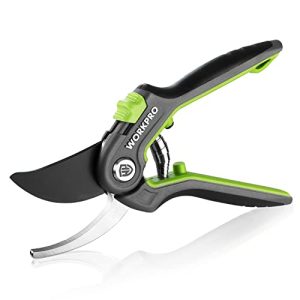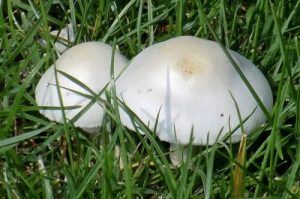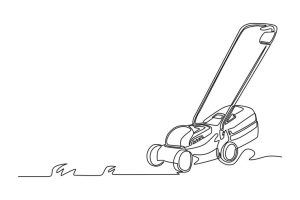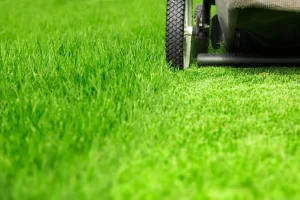Are you tired of finding your bird feeders emptied by unexpected visitors? If you’ve ever woken up to the sight of a bear wreaking havoc in your backyard, you’re not alone.
Bears are incredibly curious and have a keen sense of smell, making your bird feeders an irresistible attraction. But don’t worry, there are effective ways to keep these gentle giants at bay while still enjoying the lively chirping of your feathered friends.
Imagine a morning where you sip your coffee, watch the birds flutter, and know your feeders are safe. Intrigued? Discover the secrets to achieving this peaceful coexistence and protect your backyard sanctuary. Dive into our practical guide and reclaim your space from these furry intruders.
Understanding Bear Behavior
Bears are curious creatures, often drawn to bird feeders by the smell of food. Secure feeders with sturdy poles and use bear-resistant designs. Regularly clean up spilled seeds to remove tempting scents that might attract bears to your yard.
Understanding bear behavior is crucial if you want to keep these curious creatures away from your bird feeders. Bears are intelligent and resourceful, often driven by their powerful sense of smell and a voracious appetite. By learning more about their habits, you can effectively deter them from turning your backyard into their personal buffet.What Attracts Bears To Your Yard?
Bears are opportunistic feeders. They are drawn to easily accessible food sources, and a bird feeder can be like a dinner bell. Understanding this, you might ask: what can you do to make your yard less enticing?Bear’s Incredible Sense Of Smell
A bear’s sense of smell is its superpower. It’s said that they can detect scents from miles away. Imagine a bear picking up the aroma of birdseed while you’re having your morning coffee. This means even small traces of food can be a big attraction.Bear Activity Patterns
Bears are most active during dawn and dusk. This is when they forage for food. Knowing this, you might consider adjusting your bird feeding schedule to times when bears are less active.Bears And Their Curiosity
Have you ever seen a bear investigating something unusual? Bears are naturally curious. If your bird feeder has intriguing scents or is within easy reach, it’s likely to attract their attention.The Importance Of Bear Safety
Keeping bears away isn’t just about protecting your bird feeders. It’s also about ensuring your safety and that of the bears. A bear that finds food in your yard once is likely to return, which can lead to dangerous encounters.Personal Experience: The Curious Bear In My Backyard
One morning, I found my bird feeder knocked over, seeds scattered everywhere. My neighbor mentioned seeing a bear the evening before. This taught me the importance of removing feeders at night and storing seeds securely. Understanding these aspects of bear behavior can help you take actionable steps to prevent bears from visiting your yard. By addressing what attracts them and modifying your habits, you can enjoy birdwatching without unexpected furry visitors. What changes will you make to protect your feathered friends and keep the peace with your wild neighbors?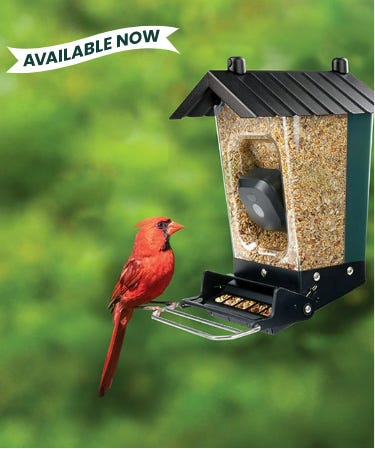
Choosing Bear-resistant Feeders
Keeping bears away from your bird feeders is crucial to maintaining a peaceful backyard. Bears are naturally curious and have a keen sense of smell, which can lead them straight to your bird feeding haven. Choosing bear-resistant feeders is an effective strategy to deter these furry intruders. By investing in feeders designed specifically to withstand bear activity, you can protect your feathered visitors and avoid unwanted bear encounters.
Features To Look For
When selecting a bear-resistant feeder, look for sturdy materials like metal or heavy-duty plastic. These materials can withstand the strength and persistence of a bear. Additionally, opt for feeders with locking lids or mechanisms that make it difficult for bears to access the food.
Consider feeders with a smooth, rounded design. This shape makes it challenging for bears to grip and manipulate the feeder. Also, ensure the feeder is large enough to hold an adequate amount of birdseed but not too large that it becomes a target for bears.
Reflect on feeders that have been tested and proven effective in bear-prone areas. This can provide peace of mind and assurance that your investment is worthwhile.
Recommended Brands
Several brands specialize in bear-resistant feeders. One popular choice is “BearSaver.” They offer a range of feeders specifically designed to keep bears at bay. These feeders have robust construction and secure locking systems.
Another reputable brand is “CobraCo.” Their feeders are crafted from durable materials and feature innovative designs that make it tough for bears to tamper with them.
If you’re willing to invest a bit more, “Grizzly Proof” offers premium feeders that have been tested in bear-heavy regions. Their products boast high quality and reliability, ensuring your bird feeders remain untouched by bears.
Have you ever wondered how much time and effort you can save by simply choosing the right feeder? Investing in bear-resistant feeders not only protects your birdseed but also gives you peace of mind. Next time you’re looking to upgrade your backyard setup, consider these options and enjoy a bear-free bird-watching experience.
Proper Placement Of Bird Feeders
Keeping bears away from bird feeders requires strategic thinking, especially when it comes to their placement. Proper placement can make all the difference in ensuring your feathered friends are safe and fed, while keeping the big furry ones at bay. Get it right, and you’ll enjoy peaceful mornings watching birds without the surprise of a bear visit.
Height And Location
Hang your bird feeders at least 10 feet off the ground. Bears are great climbers, so height is your ally. Choose a location that’s away from trees or structures that bears can use to reach the feeder.
Think about setting up feeders on a pole with a baffle. This is a simple barrier that stops bears from climbing. It adds an extra layer of protection.
Place feeders far from your house and trash bins. Bears are attracted to smells, and keeping feeders away from these areas minimizes the risk of attracting them.
Seasonal Adjustments
Consider removing feeders during bear-active seasons. Spring and fall see increased bear activity as they search for food. Temporarily removing feeders might save you a headache.
When summer rolls in, you can put the feeders back up. Bears are less active then, giving you a safe window to enjoy bird-watching.
Adjusting feeder placement based on season gives you control. It’s a small change with big benefits for keeping bears away.
Have you ever found yourself wondering why bears keep visiting despite your efforts? Maybe a few tweaks in placement could be the answer. What’s the craziest place you’ve considered hanging your bird feeder to avoid bears? Share your insights!
Securing Feed And Storage
Keep bears away from bird feeders by securing storage areas. Use sturdy, bear-proof containers for birdseed. Hang feeders high, far from branches or fences. Choose spots bears can’t reach easily. Clean up spilled seeds immediately to prevent attracting bears. Install motion-activated lights or alarms as deterrents.
Securing feed and storage is crucial for keeping bears away from bird feeders. Bears are attracted to the smell of bird food and can cause damage. Properly securing your bird feed ensures that it remains accessible only to the birds, not the bears. Implementing effective storage solutions is vital in maintaining a safe environment for your birdwatching hobby.Safe Storage Practices
Store bird feed in sturdy containers with tight-fitting lids. Metal containers are ideal as bears can’t break them easily. Place these containers in a garage or shed to keep them out of sight. Ensure that the storage area is not accessible to bears. A locked door adds an extra layer of security. Regularly inspect containers for signs of damage. Replace any container with cracks or holes promptly.Avoiding Overfilling
Overfilling bird feeders increases the risk of attracting bears. Fill feeders with only enough food for a day or two. This minimizes leftover food that may attract bears. Clean up spilled seeds immediately. Scattered seeds on the ground are an open invitation for bears. Monitor the amount birds consume daily. Adjust the quantity to prevent excess food in the feeder. Regular maintenance keeps feeders safe and unattractive to bears.Using Deterrents Effectively
Keeping bears away from bird feeders requires smart strategies. One effective method is using deterrents. Deterrents can discourage bears without harming them. They offer a humane way to protect your bird feeders. Understanding how to use them effectively can make a big difference.
Types Of Deterrents
There are various types of deterrents to consider. Electric fencing is a popular choice. It delivers a mild shock to any curious bear. Motion-activated lights can scare bears away with sudden brightness. Loud noises also startle bears and keep them distant. Scent-based deterrents use smells bears dislike. These include ammonia and vinegar. Choosing the right deterrent depends on your environment.
Installation Tips
Proper installation ensures deterrents work well. Position electric fencing around the feeder area. Make sure it’s high enough to deter large bears. Motion-activated lights need to be placed strategically. They should cover the area where bears might roam. Loud noise machines must be loud enough to surprise bears. Test them to ensure they activate correctly. Scent-based deterrents should be refreshed regularly. This keeps their potency strong. Following these tips maximizes the effectiveness of deterrents.
Creating A Bear-unfriendly Environment
Creating a hostile environment for bears can help safeguard bird feeders. Hang feeders high and far from trees to deter climbing. Use bear-proof containers to limit access to food, ensuring birds can eat safely without attracting unwanted visitors.
Creating a bear-unfriendly environment is vital for protecting bird feeders. Bears are attracted by the promise of an easy meal. By making your yard less appealing, you can prevent unwelcome visits. Simple changes in your landscaping and daily habits can deter these furry intruders. Let’s explore practical ways to keep bears away.Landscaping Tips
Trim shrubs and trees near bird feeders. Overgrown vegetation offers cover for bears. Keep the area open and clear. Bears feel less secure in exposed spaces. Use plants that bears dislike. Thorny or aromatic plants can be effective. Consider planting lavender, mint, or roses. These plants can discourage bears from lingering. Install motion-activated lights or sprinklers. Sudden movements or noises can startle bears. This reduces the chances of them returning.Removing Attractants
Store birdseed indoors or in a bear-proof container. Bears have a strong sense of smell. Leaving food outside invites trouble. Clean up spilled seeds and fallen fruit promptly. Bears are opportunistic feeders. Any food source can attract them. Secure trash cans with bear-resistant lids. Bears are skilled at opening traditional bins. Compost bins should be tightly sealed. Food scraps can tempt bears into your yard. Consider using bear-proof fencing around feeders. This provides an extra layer of protection.Community And Legal Considerations
Consider local laws and community rules before installing barriers to deter bears. Secure bird feeders inside enclosures or use bear-proof designs. Maintain a clean area to prevent attracting wildlife.
Keeping bears away from bird feeders requires more than just backyard adjustments. It involves understanding your local laws and fostering a sense of community. Let’s explore the vital aspects of community and legal considerations that can help you maintain a bear-free environment while feeding your feathered friends.Local Regulations
Before setting up your bird feeders, it’s essential to check the local regulations in your area. Some regions have strict rules about feeding wildlife due to the presence of bears. Contact your local wildlife agency or town hall to learn about any specific guidelines. Ignoring these rules could lead to fines or other penalties. You might be surprised to know that some areas even mandate bear-proof bird feeders. It’s crucial to stay informed and compliant to avoid any legal headaches.Engaging With Neighbors
Building a community approach is an effective way to keep bears at bay. Talk to your neighbors about their experiences and strategies. Sharing tips can lead to a more bear-aware neighborhood. Have you ever considered organizing a community meeting or online group? It’s a proactive way to discuss bear sightings and collectively plan preventive measures. When everyone is on the same page, it’s easier to implement effective solutions. By fostering open communication, you create a safer environment for both people and birds. Engaging with your community can also lead to new friendships and a stronger network of support. Isn’t it worth asking how you can work together for a common goal?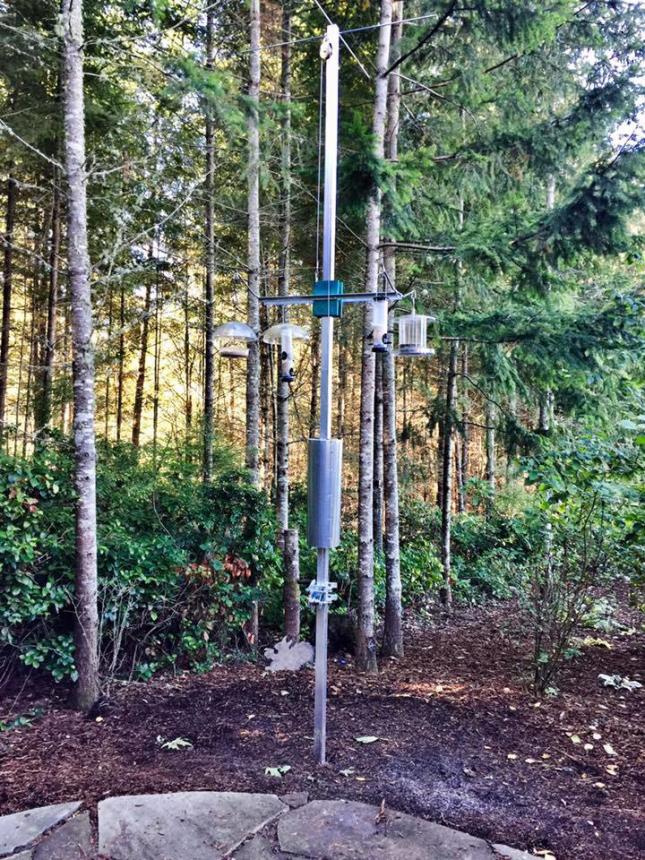
Monitoring And Adapting Strategies
Keeping bears away from bird feeders requires ongoing vigilance and flexibility. What works one season might not be effective the next. By closely monitoring bear activity and adapting your strategies, you can enjoy birdwatching without attracting unwanted visitors. Let’s dive into some practical steps.
Signs Of Bear Activity
Recognizing bear signs early can save your bird feeder. Do you notice overturned feeders or claw marks around your yard? These are clear indicators of bear visits. You might even spot footprints or droppings nearby. Once you detect these signs, it’s time to reassess your approach.
Consider installing a camera to capture nighttime activity. This can provide valuable insights into how often bears visit and what attracts them. Understanding their patterns will guide you in adjusting your strategies effectively.
Adjusting Techniques
How often do you change your tactics to outsmart bears? If your current method isn’t working, try something new. For example, hanging feeders higher might deter bears but encourage squirrels. You might need a combination of tactics.
Switch to bear-proof feeders or use electric fencing as barriers. These can be highly effective if placed correctly. Each adjustment is a step toward a bear-free zone.
Think about the timing of feeding. Bears are most active during dawn and dusk. Consider removing feeders during these times to reduce attraction. This small change can significantly decrease bear visits.
Have you ever underestimated the adaptability of bears? They learn quickly, so be prepared to change your tactics regularly. With persistence and creativity, you can enjoy your bird feeders without the worry of bear encounters.
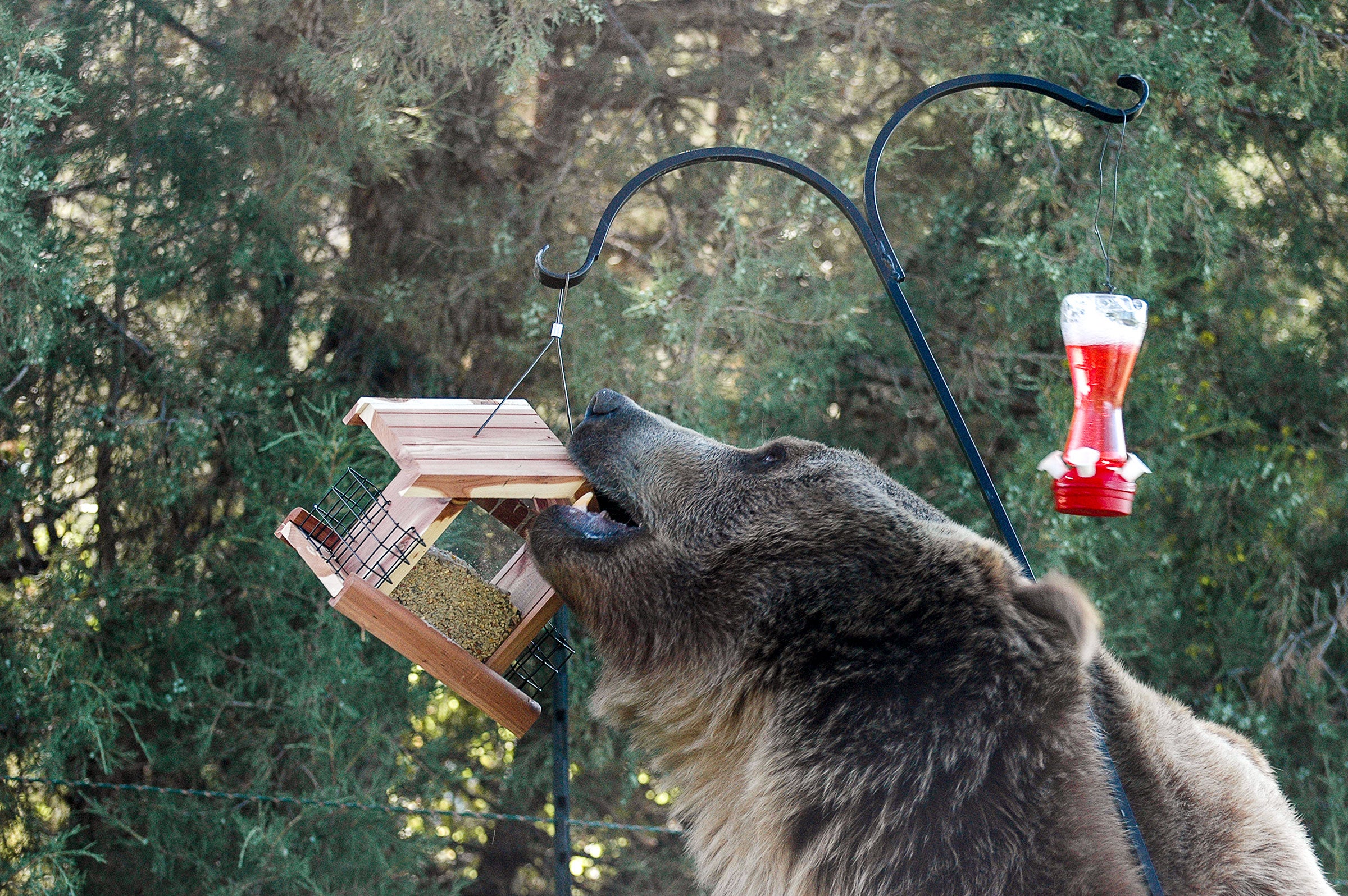
Frequently Asked Questions
How Can I Feed Birds Without Attracting Bears?
Use bear-proof bird feeders and hang them at least 10 feet high. Clean fallen seeds regularly. Opt for birdseed varieties that aren’t attractive to bears, such as safflower seeds. Install feeders away from trees and bear-accessible areas. Consider feeding birds only during months when bears are hibernating.
What Smell Will Keep Bears Away?
Strong odors like ammonia and vinegar can repel bears effectively. Use them around campsites for safety. Bears dislike the smell of pine-based cleaners and bleach too. Spread these scents cautiously to create a bear-free zone. Regularly refresh the scent to ensure continued effectiveness.
Always prioritize safety in bear-prone areas.
Why Should I Sprinkle Coffee Grounds Around My Bird Feeder?
Sprinkling coffee grounds deters pests like ants and slugs from reaching the bird feeder. Coffee grounds also enrich the soil below, promoting healthy plant growth.
What Is The 5 7 9 Rule For Bird Feeders?
The 5 7 9 rule advises placing bird feeders 5 feet high, 7 feet from cover, and 9 feet apart. This spacing ensures safety from predators and provides ample feeding space, optimizing birdwatching experiences.
Conclusion
Keeping bears away from bird feeders is crucial. Simple changes can make a big difference. Secure your feeders properly. Use bear-resistant designs. Clean up spilled seeds and food. Remove attractants from your yard. Store birdseed indoors. Bears have a keen sense of smell.
They are drawn to easy food sources. Protect your feeders to enjoy bird watching. It’s important for safety too. Create a safe space for birds and people. With these tips, you can deter bears effectively. Enjoy nature without unwanted guests.


